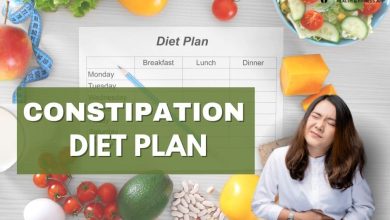Discover the Ideal Diet Plan for Weight Loss for you

Why is a Diet Plan for Weight Loss important?
We all want to lose weight fast and wonder what could be the Diet Plan for Weight Loss that will suit us. At the same time, we don’t want our health to suffer. That is why we do not recommend following fast diets. This desire to reach your goal in a short time can be a bit abstract and generate expectations that are not going to be fulfilled. What is quick weight loss for you? For each person going fast, normal or slow is quantified differently. And it really must be so. That is, not all people are capable of losing the same kilos in the same period. What may seem slow to one may be optimal for another.
When we want to lose weight, the key is to follow an eating plan. Healthily losing weight means eating well, yes, and so no drastic diets! In this article, we teach you how to structure Diet Plan for Weight Loss and we tell you the most important things to keep in mind.
How to create your Diet Plan for Weight Loss
We are going to teach you how to design a nutritional program to lose weight in three easy steps.
1.Set a Goal and Specify your Caloric Needs
The first thing you have to do is define your goal, always with the idea of losing weight healthily in mind. The key is to consume fewer calories than are expended during the day. We recommend that you do not exceed a caloric deficit of 300 to 500 kcal per day at most.
For example, if you normally consume 2,000 calories a day and want to lose weight, you should eat at least 1,500 calories a day, but stay below 2,000 calories. If this is your case, we recommend a consumption of about 1700 kcal. Thus, you will not limit yourself too much, but you will get fast results. You’ll see what an effective diet! You can also go for this 1500 Calorie Diet Plan
Also read: 7 Day Recipe for Cabbage Soup Weight Loss Diet Plan
Daily and Weekly Caloric Needs
It is also important to distinguish between daily and weekly caloric needs. To explain it to you, we are going to continue with our example of 2000 kcal per day.
The daily caloric needs are calculated from the daily caloric consumption (2000 kcal) and the daily deficit (at least 300 kcal, in this case). Thus, the result would be a daily caloric intake of 1700 kcal.
A week that would equal 11,900 kcal. The importance of knowing your weekly calorie needs gives you the power to exceed your daily caloric needs when you feel like it or when it strikes you. You can then compensate throughout the week by consuming a few fewer calories on other days to not exceed your weekly calorie needs. This gives you the ability to reach your goal with considerable flexibility in your Diet Plan for Weight Loss.
2. Create a Nutritional Plan
The second step is to check what foods are in your house: meat? Fish? White cheese? You have to analyze what you have and what you lack.
To organize yourself well, draw a table that represents the week. In the left column, you have to put three main meals (breakfast, lunch, dinner) and two secondary ones (lunch in the middle of the morning and the afternoon snack), such that:
- Breakfast
- Lunch
- Food
- Snack
- Dinner
The column headings correspond to the different days of the week from Monday to Sunday. Just below, leave a blank row to enter the calories consumed each day. In total, with the included headers, the table must have 7 columns and 6 rows.
If targeting your macronutrient intake is too difficult for you, don’t worry. At first, you don’t need to divide your food into individual macronutrients, because you will lose weight anyway if you stick to meeting your caloric needs.
Very Important: try to consume a portion of protein (such as meat or fish), one of the carbohydrates and one of fruits and vegetables with each main meal, not so much in the secondary ones. We recommend you try Dry Fruits for Weight Loss.
3. Fill in the Nutritional Plan
The last step is to fill the list every day with every meal you make, from breakfast to dinner. It may take some time, especially in the beginning. But, if you do it carefully and calculate the calories of each food you eat, you will be able to get an idea of what you eat and, consequently, you will lose weight. You can also get great results with this Coconut Oil as it aids digestion.
The most effective system for keeping track is to weigh the different foods and calculate the calories per 100 g. The most normal thing is that you repeat the menu at home frequently, so in the end, you will write it down automatically, without having to do so much calculation.
We recommend taking a snack rich in protein, both mid-morning and the afternoon because it is the best way to hold out well between meals. Proteins fill us up for a long time. Some of the most typical protein-rich snacks are protein bars, hard-boiled egg, fresh cheese, cottage cheese, protein shakes, rice cakes, and chicken breast. Check out this 7 Days Rice Diet Plan and Its Benefits
A Typical Day with a Nutritional Weight Loss Plan
How does a Diet Plan for Weight Loss work? We are going to give you an example of a typical day to easily show you how to follow a weight loss diet. From breakfast to dinner, we are writing down each meal. We will also note the different macronutrients.
Let’s continue with the same example: we are looking for a caloric intake of approximately 1700 calories per day.
| Breakfast | Bowl of yogurt with muesli | 427 kcal,24 g protein,18 g fat,40 g carbohydrates | |
| Snack/pecking | Food spring protein bar | 193 kcal,20 g protein,5 g fat,11 g carbohydrates | |
| Food | Pasta Alla norma | 554 kcal,52 g protein,21 g fat,33 g carbohydrates | |
| Snack/pecking | 1 apple | 52 kcal,0 g protein,0 g fat,14 g carbohydrates | |
| Dinner | Protein margarita pizza | 489 kcal,38 g protein,18 g fat,25 g carbohydrates | |
| Total macronutrients | 1,715 kcal,134 g protein,62 g fat,123 g carbohydrates | ||
Recommendation: Weight Loss Diet Plan for Men That Can Help You Lose Weight
Conclusion
Following a Diet Plan for Weight Loss is one of the best ways to lose weight because it consists of eating with your health in mind.
There are basic concepts to lose weight with this system, such as the caloric deficit, that is, eating fewer calories than are expended. We recommend not exceeding a caloric deficit of a maximum of 500 kcal per day.
There are a few simple steps to follow: determine calorie expenditure, calculate caloric needs and fill in the list of foods that are being consumed. We have free templates available to make it easy for you.
Conveniently, all meals have a portion of protein, one of the complex carbohydrates, and one of vegetables or fruits.
Related Article:
Weight Loss Diet Plans for Teenage Girls – A Healthy Weight Loss Diet Plan
Diet – Intermittent Fasting Diet Plan for Weight Loss
Egg Diet Plan for Weight Loss Reduce Your Belly Fat
Detox Water Diet Plan for Weight Loss and Detox Drink Recipes




